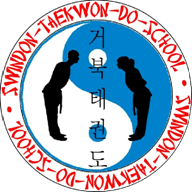



|
What I’ve discovered
Yi I was born on 26th December 1536, in Kangwon province, he was a child prodigy and could read Chinese script at just three years old.
Yul-Gok had a very talented mother who was an excellent painter and he is said to have composed an essay at the age of seven by which time he had completed his study of the Confucian classics.
He passed the Civil Service literary exam at the very young age of thirteen.
At twenty-nine he passed the higher Civil Service exam gaining full marks, and then began his government service.
Some sources claim that it was the death of his mother, which resulted in his seeking refuge in a Zen Buddhist monastery. His mother died when he was 36 and he spent time on Kumgang-San(Diamond Mountain) after a year of study and meditation he is said to have left the monastery and devoted himself to the study of Confucianism.
Yul-Gok (Chestnut Valley) was a leading Neo-Confucian scholar; he emphasized the principle of the energising element known as ki (also chi the matter or vital force). It was the philosophy of the 12th Century Confucian scholar Chu-Hsi, which Yul-Gok developed into his own school of thought.
Yul-Gok emphasised the value of practical applications for knowledge, he is said to have been unusual for a scholar in that he carried out manual labour.
Unfortunately all Yul-Gok’s efforts to improve Korean government were marred by the division that subsequently arose between his followers and those of another great Confucian scholar, Yi Hwang (see also Toi-Gye).
Yul-Gok advised the raising of a 100,000 strong army, but to his dismay, his warnings were ignored.
In 1575 the Korean government was in inner turmoil as the Eastern Men (Yi Hwang’s supporters) and Western Men (Yi I’s supporters) were in constant disagreement.
These inner battles and their refusal to act on Yi I’s advice, adversely affected the government’s ability to repulse the Japanese forces during the Hideyoshi invasions beginning eight years after his death in 1592.
(See pattern Choong-Moo for more details). |
|
In his encyclopaedia General Choi told us: Yul-Gok is the pseudonym of the great Philosopher a scholar Yi I (1536-1584) nicknamed the Confucius of Korea. The 38 movements of this pattern refer to his birthplace on 38º latitude and the diagram represents the scholar. |